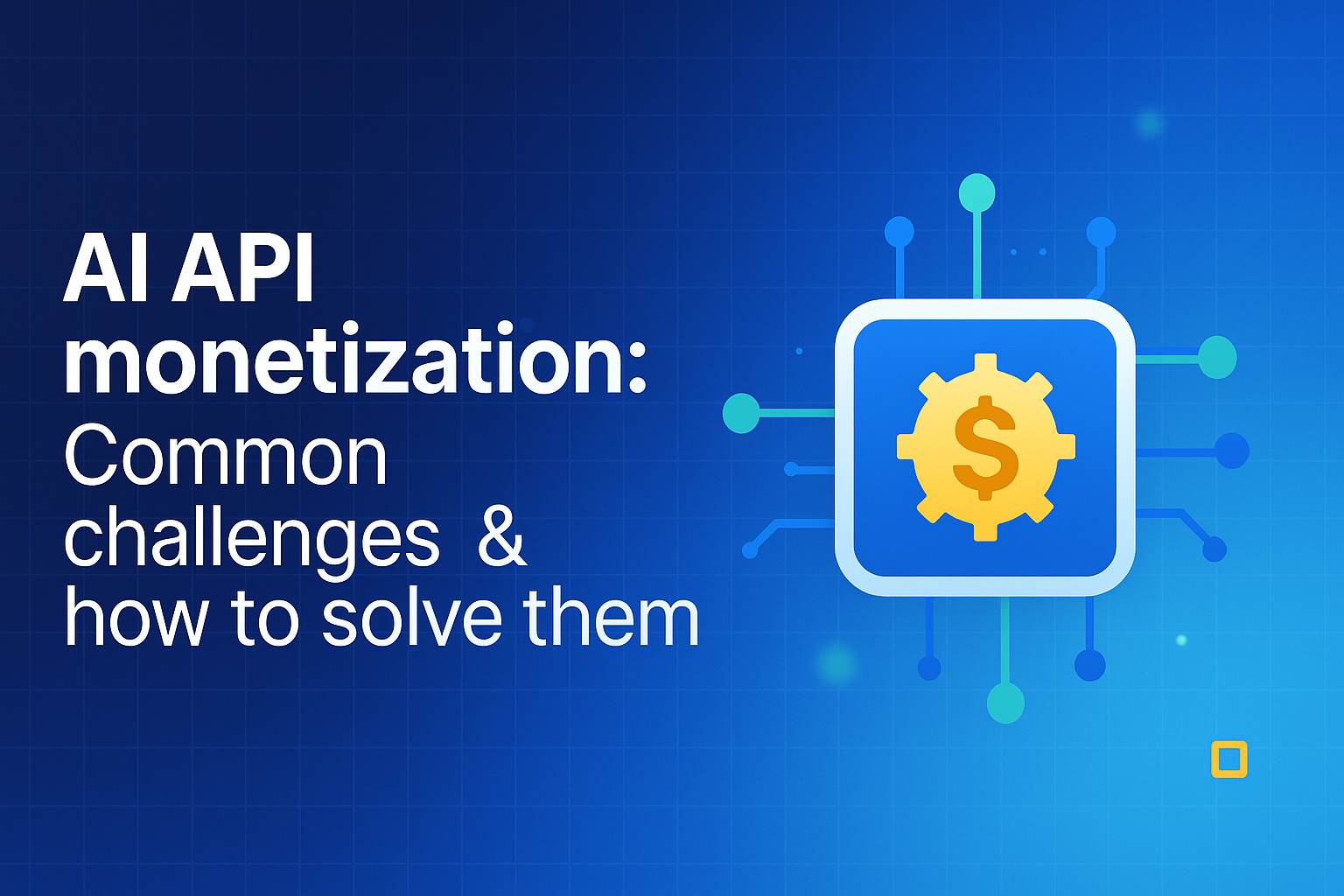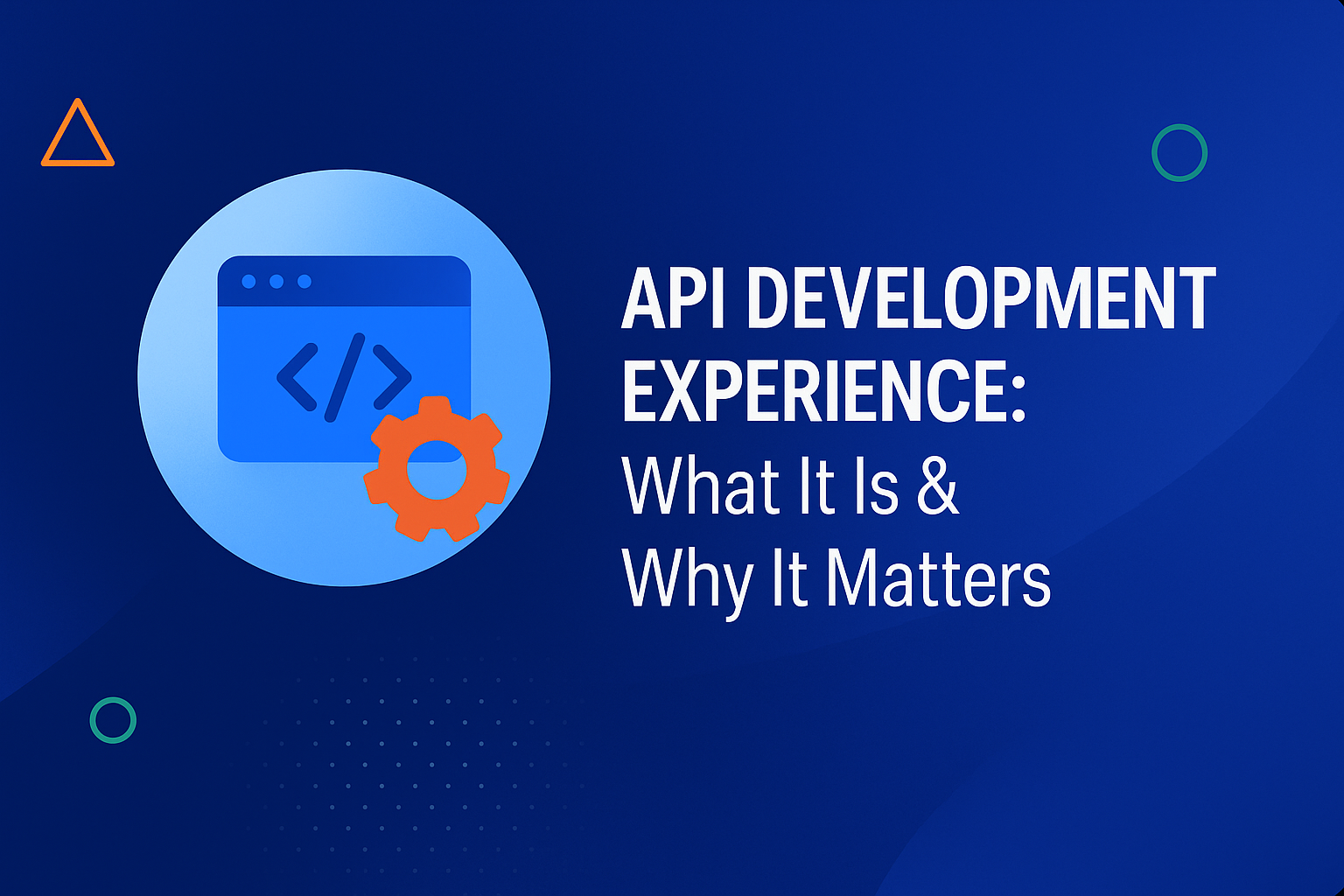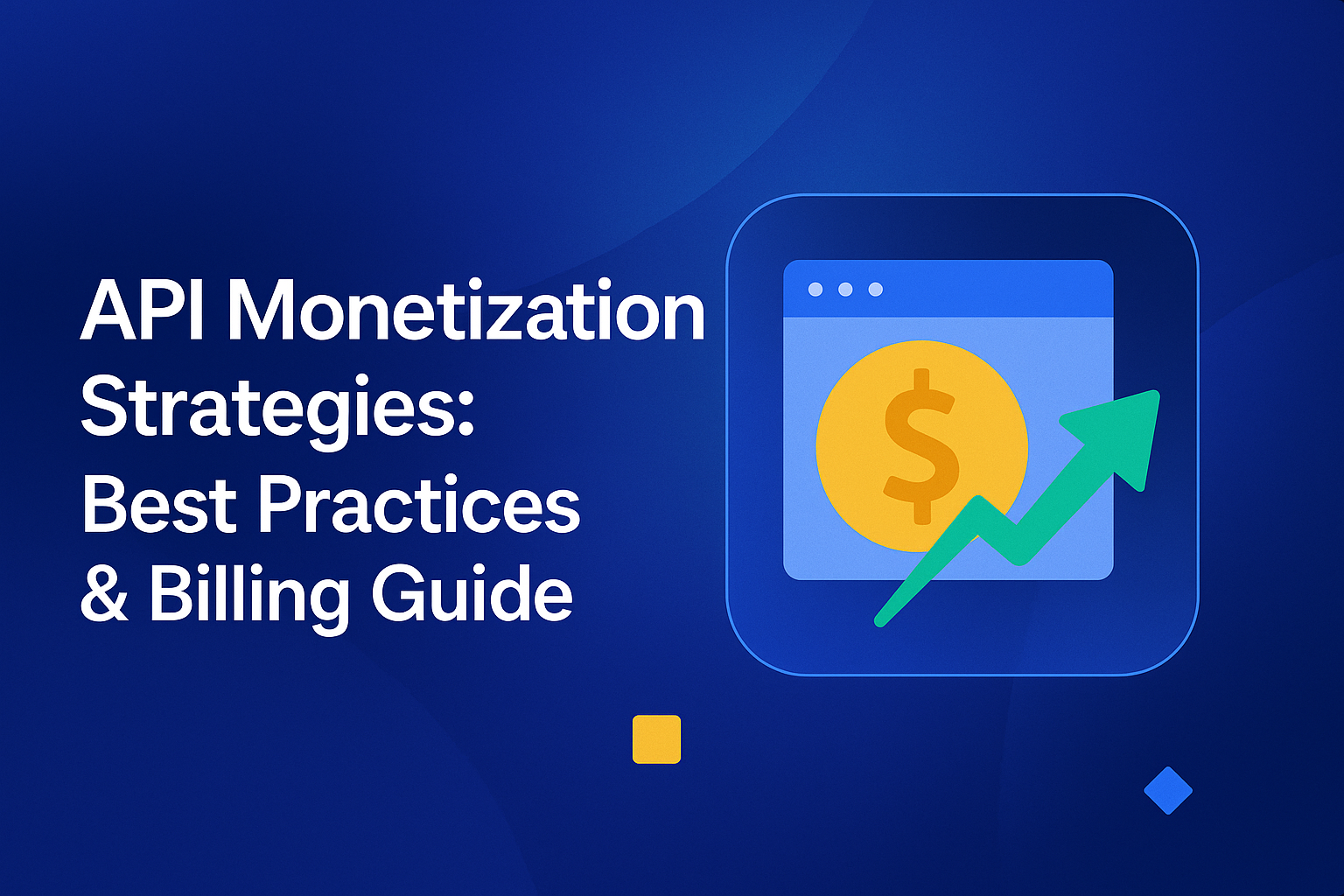API Monetization
AI API monetization: Common challenges, strategies and monetization roadmap
Updated on:

AI APIs redefine how systems compute, cost, and deliver value. Each model call executes variable inference time, token usage, and context length that shift dynamically with every request.
Traditional REST or event APIs operate on predictable cost-per-call patterns; AI workloads don’t. Their scaling curve bends non-linearly with model complexity and input variance. This variability breaks conventional monetization models. Teams must meter tokens, allocate GPUs efficiently, manage caching, and enforce latency SLAs, all while maintaining transparent, profitable pricing.
Existing billing infrastructure wasn’t designed for this level of precision or fluctuation. As a result, engineering and product teams struggle to align usage, cost, and value in real time. Without adaptive pricing logic, unified telemetry, and governance controls, operational costs escalate faster than revenue.
In this blog, we deconstruct the technical and economic barriers that block AI API monetization, and present a roadmap to help enterprises overcome these obstacles.
Defining the landscape: What “AI API monetization” really means
AI API monetization extends far beyond charging for API calls; it represents the translation of computational intelligence into measurable business value. When a model processes a prompt, it consumes GPU cycles, memory, and network bandwidth, each with real-time cost implications. Unlike traditional APIs that deliver static data or predefined logic, AI APIs deliver probabilistic outcomes, making it harder to predict both cost and perceived value per transaction.
To monetise effectively, teams must quantify what they’re actually selling: tokens, compute time, model access, or business outcomes. Each of these units has a different pricing implication. For example, a generative model’s cost structure depends on token count, context length, and model type, while an embedding API might price per vector or similarity query. The pricing granularity and dynamic scaling turn AI API monetization into a systems engineering problem as much as a business one.
Beyond pricing, monetization also demands observability and attribution. Platforms must capture fine-grained usage metrics, attribute them accurately to tenants or users, and feed this data into billing, forecasting, and optimisation systems. True AI API monetization isn’t just about revenue recovery; it’s about building the infrastructure to measure, govern, and optimize value creation across every layer of model consumption, from inference pipelines to customer dashboards.

Maturity curve for AI API monetization
Enterprises rarely perfect AI API monetization on the first attempt. Most evolve through distinct maturity stages, each defined by how they handle cost attribution, pricing complexity, and operational visibility. Understanding this curve helps teams diagnose where they are and what’s blocking scalability.
Stage 0: Experimental access
Teams expose AI models internally or to a small developer group without tracking costs or usage. APIs operate as R&D tools, not commercial assets. There’s little to no governance, versioning, or observability, resulting in cost leakages and shadow deployments.
Stage 1: Basic usage billing
The organisation introduces fixed pricing (per call or per 1,000 tokens). Metering is manual or batch-based. This stage provides initial revenue signals but fails to reflect real-time compute variation or user behaviour.
Stage 2: Dynamic, Tiered monetization
Billing becomes usage-aware. Teams differentiate pricing by model type, context size, or latency guarantees. They implement real-time metering and token telemetry, feeding into dashboards that correlate cost and revenue. This marks the beginning of monetization governance.
Stage 3: Outcome-driven and adaptive models
Mature platforms price based on value delivered, not just usage consumed. E.g., per insight generated, transaction approved, or prediction accuracy. AI monetization becomes adaptive, automatically adjusting pricing and capacity to optimise margin, user experience, and business outcomes.
Core challenges & hidden pitfalls (And their root causes)
Monetising AI APIs isn’t just a pricing exercise; it’s an orchestration challenge spanning infrastructure, billing, and trust. Beneath every visible challenge lies a technical or architectural root cause.
- Unpredictable usage and cost volatility: AI APIs generate highly variable workloads driven by prompt complexity, model choice, and context size. Each request can consume different compute and memory resources, making forecasting almost impossible. Without granular telemetry and cost modelling, teams struggle to maintain predictable margins.
- Metering and attribution complexity: Traditional API billing measures requests; AI APIs require measuring tokens, models, batch inference, and fine-tuning sessions. Most billing stacks can’t track multi-dimensional usage, causing data drift between consumption and billing reports.
- Infrastructure inefficiency and scaling costs: GPU-intensive workloads drive high idle costs. Inefficient scaling policies or unoptimised caching cause cost spikes during peak load. Many teams underestimate the impact of model warmup, concurrency, and latency SLAs on overall profitability.
- Pricing transparency and customer trust: Users often experience “bill shock” due to opaque token billing or inconsistent inference pricing. A lack of explainable metering erodes trust and increases churn.
- Vendor and upstream dependency risk: Relying on third-party model providers exposes platforms to cost changes, version drift, or API deprecations. Without abstraction and fallback layers, dependency risks compound into sudden business model disruptions.
- Data governance and compliance overhead: AI APIs often handle sensitive data, triggering strict audit, encryption, and localisation requirements. These add hidden costs that many pricing models ignore. The root cause is treating compliance as a policy issue instead of embedding it into infrastructure design.
- Fragmented billing and integration systems: Billing, metering, and analytics often run on separate stacks, causing reconciliation delays and inconsistent invoices. The real issue is the lack of a unified layer that connects usage telemetry with real-time pricing and payment logic.
Strategic solutions & best practices (Your monetization playbook)
AI API monetization isn’t just about choosing the right pricing model, it’s about engineering alignment between compute cost, customer value, and business predictability. The most successful platforms treat monetization as a technical capability, not a finance layer.
1. Align pricing with value, not volume
Flat-rate or per-token pricing models ignore the variability of AI workloads. Instead, link pricing to value delivered. For example, an AI underwriting API can charge per approved loan rather than per inference, or an AI content API can price per generated asset that passes quality thresholds.
This creates cost-to-value symmetry, ensuring customers pay for measurable outcomes. Platforms like OpenAI and Anthropic already use hybrid pricing (per model, per context window) to reflect real compute intensity.
2. Implement real-time metering and telemetry
AI APIs demand second-by-second visibility. Deploy token-level metering that tracks input/output ratios, model type, latency, and cost per request. Use telemetry systems such as Prometheus, Datadog, or OpenTelemetry to collect metrics and integrate them with billing pipelines (e.g., Stripe or Metronome). Real-time metering enables dynamic throttling, anomaly alerts, and adaptive pricing that reacts to live usage patterns.
3. Unify billing, cost, and usage systems
Fragmented billing stacks create reconciliation gaps and delayed revenue recognition. Introduce a unified monetization layer that aggregates usage from multiple gateways, model providers, and regions.
For instance, a company running inference across OpenAI, Hugging Face, and custom models can route all telemetry through a single cost attribution service. This allows unified billing dashboards and per-tenant margin analysis, a prerequisite for enterprise-scale monetization.
4. Improve transparency and customer trust
Enterprise buyers demand clarity. Offer customer dashboards that visualise token usage, cost projections, and compute history. Add pre-billing alerts or usage caps to prevent “bill shock.” Hugging Face and Replicate both display cost estimations before inference runs, a small UX detail that significantly increases user confidence and retention.
5. Optimise infrastructure for cost efficiency
Inference is expensive. Deploy caching, model quantisation, and autoscaling to reduce compute waste. Batch low-latency requests to improve GPU utilisation, or leverage spot instances for non-critical workloads.
Continuously profile models to identify cost anomalies. For example, a jump in average inference time due to context length creep. Efficient infrastructure directly amplifies monetization margins.
6. Bake in governance and compliance from day one
If your AI APIs process sensitive data, financial transactions, health records, or PII, compliance isn’t optional. Build region-aware routing, automated audit logs, and encryption pipelines into your monetization stack.
For example, a bank consuming an AI risk model may require all EU requests to stay within GDPR-compliant data centres. Pricing that accounts for compliance overhead ensures sustainability without margin surprises.
7. Continuously experiment and iterate
The economics of AI change fast. Treat pricing as a live variable, not a static decision. Run A/B tests for pricing tiers, offer volume discounts, or introduce “compute credits” for enterprise buyers.
Monitor elasticity, how users respond to price changes, and adapt accordingly. Leading API platforms like Cohere and OpenAI constantly adjust their pricing tiers based on inference efficiency gains and user patterns.
Case studies & real-world examples of AI API Monetization
AI API monetization works best when platforms balance cost transparency, scalability, and customer value alignment. The following examples illustrate how leading companies engineered sustainable revenue models around their AI APIs.
1. OpenAI: Hybrid pricing based on model and token dynamics
OpenAI pioneered one of the most visible AI API monetization frameworks. Its pricing differentiates by model family, token type (input vs. output), and context window size. This hybrid model lets developers pay only for what they use while incentivising migration to more efficient models.
Technical insight: OpenAI’s approach depends on fine-grained token telemetry and real-time cost aggregation, allowing per-millisecond inference tracking. This enables predictable margins and clear cost-per-generation visibility for enterprise clients.
2. Hugging Face: Tiered monetization via inference endpoints
Hugging Face monetizes hosted models through tiered plans: free, professional, and enterprise. Developers can deploy their own models or access pre-trained ones via managed inference APIs. Pricing varies by compute instance type (CPU/GPU), concurrency, and latency SLA.
Technical insight: By offering managed infrastructure, Hugging Face converts operational complexity into recurring revenue. It uses autoscaling and containerized deployments (likely via Kubernetes and ONNX Runtime) to optimise cost-per-inference at scale.
3. Stability AI: Compute-driven monetization for generative workloads
Stability AI’s API for Stable Diffusion charges based on image generation complexity, resolution, and model version. High-resolution or fine-tuned model calls incur higher compute costs, directly reflected in per-request pricing.
Technical insight: Stability AI leverages dynamic GPU scheduling and workload batching to maintain profitability despite highly variable inference times. This compute-aware billing model ensures that the cost curve tracks closely with GPU utilisation and energy consumption.
Implementing Monetization roadmap & milestones
Building a sustainable AI API monetization framework requires progressive implementation, not a single pricing launch. The goal is to move from experimentation to predictable, enterprise-grade revenue through structured milestones that align engineering, finance, and product teams.
Phase 1: Discovery & cost baseline
Start by identifying your true unit economics. Instrument every inference call to capture token usage, model type, latency, and GPU cost. Use telemetry tools like Prometheus or Flylytics to build a cost-per-request baseline. At this stage, the goal isn’t billing, it’s visibility. Without a cost foundation, pricing models remain speculative.
Phase 2: Pilot pricing & limited release
Introduce a fixed or tiered pricing model to a small developer or internal user group. Monitor customer behaviour, compute variance, and margin deviation in real time. Tools like Metronome or Stripe Metering can handle early-stage billing experiments. Use this phase to test pricing elasticity, how changes in price affect usage volume.
Phase 3: Real-time metering & unified billing
Integrate metering data directly into your billing system. Build a unified monetization layer that reconciles usage across models, regions, and gateways. Establish per-tenant invoicing, cost attribution, and revenue dashboards. This milestone transitions monetization from reactive to operational.
Phase 4: Adaptive & outcome-based monetization
Once you have stable usage and billing data, evolve toward dynamic pricing. For example, charge per transaction approved (in fintech) or per lead scored (in marketing). Enable predictive billing that adjusts pricing tiers automatically based on real-time consumption trends. This stage reflects a mature AI-as-a-Service model with built-in cost optimisation and value alignment.
Phase 5: Governance, optimisation & expansion
Embed governance and compliance controls: audit logs, per-region routing, and role-based billing permissions. Use analytics to identify underutilised endpoints, overperforming models, or cost anomalies. Finally, extend monetization to partner ecosystems, offering white-labeled access or revenue-sharing APIs.
Future trends & emerging patterns
AI API monetization is entering a new phase where pricing, infrastructure, and intelligence converge. As workloads become dynamic and agent-driven, traditional billing models will no longer suffice. The next generation of monetization will be adaptive, transparent, and value-linked.
- Outcome-based monetization: Pricing will evolve from per-call and per-token models to value-based billing tied to business outcomes, such as a successful recommendation, approved transaction, or verified claim. This shift aligns revenue directly with customer success and model performance.
- Dynamic and adaptive pricing engines: Real-time pricing systems will use telemetry and cost analytics to adjust rates based on demand, model load, or latency slas. Similar to cloud spot pricing, this ensures better resource utilisation and more predictable profit margins.
- AI-native billing infrastructure: Traditional billing tools will transform into AI-aware monetization layers capable of understanding context size, model type, and compute intensity. They’ll integrate deeply with inference pipelines, not just API gateways.
- Agent-level monetization and governance: As AI agents autonomously consume APIs, billing will shift from user accounts to agent identity and task-level attribution. Each autonomous action, search, analysis, or workflow, becomes a measurable, billable unit.
- Transparency and predictability as differentiators: The winners will offer explainable billing models, real-time dashboards, spend forecasts, and usage heatmaps. Predictability will become a competitive feature, fostering trust among enterprise buyers and developers alike.
Final thoughts
AI API monetization is no longer a side consideration, it’s the economic backbone of intelligent infrastructure. As organisations operationalise AI across products and workflows, the ability to measure, price, and optimise every inference call becomes a differentiator, not an afterthought.
Enterprises that invest early in real-time metering, unified billing, and adaptive pricing will gain both technical control and business resilience. The focus must shift from recovering costs to capturing value, aligning revenue directly with the intelligence delivered.
Ultimately, successful monetization isn’t about tokens or models; it’s about building trust through transparency, performance, and predictability. Those who master this balance will define how AI evolves from a powerful capability into a sustainable, scalable business model.
FAQs
1. What makes AI API monetization different from traditional API monetization?
Traditional APIs deal with predictable data or logic calls, while AI APIs deliver variable, compute-heavy outputs. Each AI request involves factors like token count, model type, and inference time, making costs fluctuate. Monetizing AI APIs requires granular metering, adaptive pricing, and real-time cost attribution to maintain profitability and transparency.
2. Why is token-based billing challenging for AI APIs?
Token-based billing captures usage but not value. Inference complexity, model selection, and latency all influence compute cost beyond token count. Without deeper telemetry, providers risk undercharging for heavy workloads or overcharging low-latency requests. Successful platforms combine token metrics with model-specific and outcome-based pricing for balanced monetization.
3. How can enterprises ensure fair and transparent AI API pricing?
Enterprises must integrate real-time metering, cost dashboards, and predictive spend analytics into their developer portals. Transparency comes from showing usage data, not hiding it. Clear billing terms, anomaly alerts, and usage forecasts build customer trust while preventing “bill shock.” Visibility at every level improves both customer retention and revenue stability.
4. What role does governance play in AI API monetization?
Governance ensures monetization complies with regional, ethical, and regulatory frameworks. It defines who can access APIs, how data is processed, and where usage is logged. Embedding governance in infrastructure, with audit logs, encryption, and data localisation, allows safe scaling of AI APIs while maintaining enterprise-grade accountability and compliance.
5. What steps help organisations start AI API monetization effectively?
Begin with cost visibility, measure inference cost, token usage, and model performance. Then pilot simple pricing tiers, gather feedback, and iterate. Introduce unified billing and telemetry once patterns stabilise. Mature models evolve toward dynamic, value-based pricing, supported by transparent usage reporting and adaptive governance. Scalability follows precision, not volume.
You’ve spent years battling your API problem. Give us 60 minutes to show you the solution.
.svg)







